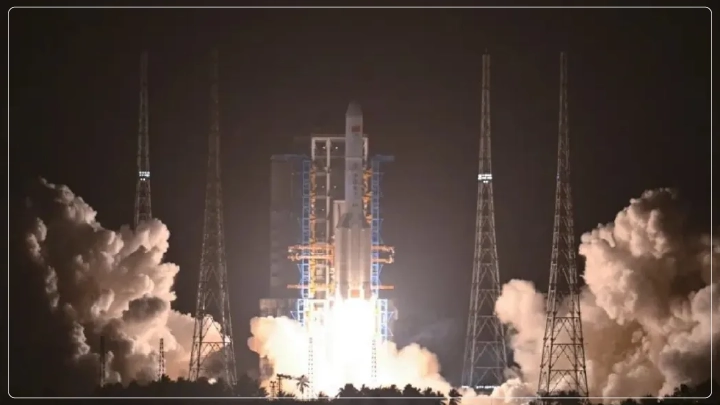April 2025
China successfully launched the TJS-17 satellite on April 10, 2025, marking its 19th orbital delivery operation for the calendar year. The satellite was lifted off on a Long March 3B from the Xichang Satellite Launch Center. Officially designated as the "Communication Technology Experiment Satellite-17, " it is described as a testbed for a new "multi-band, high-speed satellite communication technology." While the Shanghai Academy of Spaceflight Technology (SAST) proudly announced the success of the launch, it did not provide any images or technical specifications, leading to much speculation about the satellite's true capabilities and mission objectives.

China's TJS series, a set of satellites, has triggered much speculation among Western analysts. Some opine that these satellites may be used for dual-purpose or military functions: signals intelligence; early missile-warning detection; satellite inspection and strategic communications with the People's Liberation Army. TJS-17 is the third satellite in a subset of TJS developed by SAST, after TJS-15 and TJS-16. The launch of these satellites within one month indicates an accelerated deployment or testing phase. The mission patch for TJS-17 portrays the "King of the North," one of the Four Heavenly Kings from Buddhist mythology. If there is to be a future TJS mission representing the "King of the South," this heavenly quartet could refer to orbital coverage, pointing capabilities, or inter-program nomenclature.
Rapid growth has been indicated in China's space sector, which fetes that eight out of16 satellites have been launched within the last one-and-a-half years. Some TJS satellites like all ones go on traditional geostationary orbits. Others deviate significantly from the orbit, such as TJS-13, which adopted a very elliptical, Molnija-like orbit. Another satellite, TJS-3, launched in 2018, released a secondary object that was able to undergo a few independent maneuvers, potentially inhibiting on-orbit servicing, inspection, or counter-space capabilities. With 19 launches already completed by early April, the country will achieve or exceed its self-imposed, but unofficial, target of 100 orbital launches by 2025. This growth would be attributed to an increase in state and commercial satellite constellations, mega constellation programs for broadband internet, experimental space, and advanced rocket technologies, and expanding crewed and robotic missions. Some of the recent missions include the four internet satellite test payloads launch and the Long March 6 launch from Taiyuan spaceport.
China plans to make a significant impact in 2025 with numerous spectacular missions, including Tianwen-2, which will return samples from a near-Earth asteroid and rendezvous with a main-belt comet, along with more crewed missions to the Tiangong space station. Next year will also witness the first flights of two new medium-lift rockets, possibly to deliver next-generation cargo craft to Tiangong. This indicates China's technology program and growing strategic independence in both low Earth orbit (LEO) and geostationary orbit. The launch of TJS-17 demonstrates China's ambition to expand its space capabilities in communications, surveillance, and defense. With the C space launch ramping up and missions becoming more complex and opaque, this is where China solidifies its status as a superpower in space.
April 2025
April 2025
April 2025
April 2025